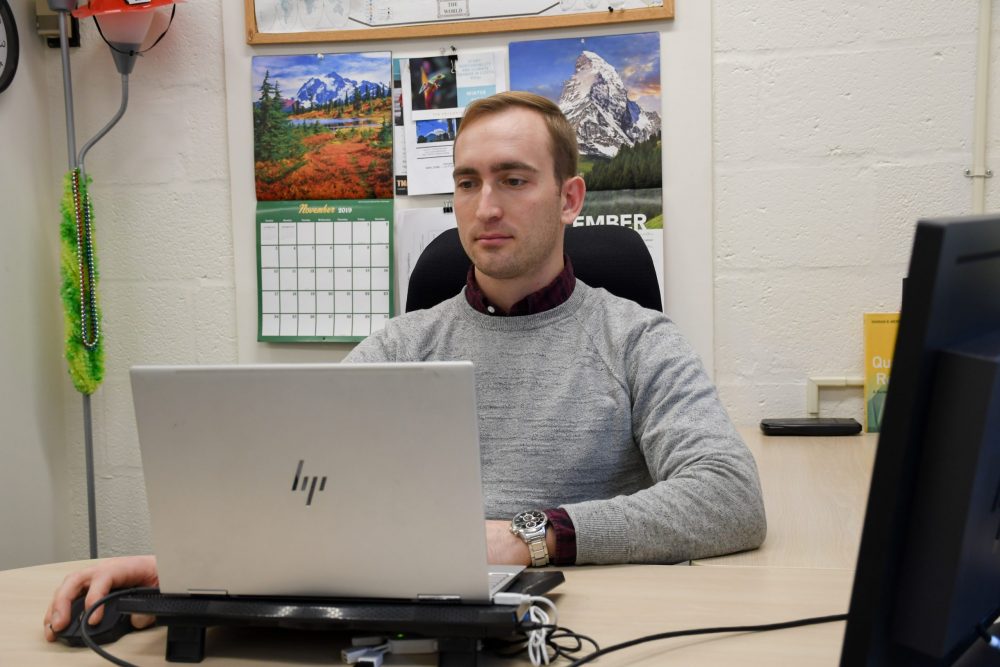BALTIMORE — Nicole Ponce, a senior architecture student at the Maryland Institute College of Art, visited a freshwater lake in the Netherlands as part of a class last summer. Her assignment: to envision sustainable housing and commercial uses for the site.
She finished the course, a MICA collaboration with a Dutch company, by proposing and designing a water filtration system that uses the natural flow of two rivers. Other students focused on creating a walkable city to help the environment by limiting carbon emissions.
The class is one of many examples of how architecture programs in colleges across the country are preparing students to deal with climate change.
Often, the course descriptions include the word “sustainability.” Cristina Murphy, assistant professor in the Morgan State University School of Architecture and Planning, says sustainability — which includes designing buildings and systems that don’t deplete the resources of surrounding communities — is closely linked with climate change.
“There are obvious signs of [climate change] problems,” Murphy says. “As architects teaching future architects, it would be suicidal not to talk about it.”
The field of sustainability continues to grow in professional architecture and engineering, and Michael Galczynski, who teaches engineering at the University of Maryland, College Park, says all fields must work together to mitigate climate change.
“Climate change, like any problem in society, isn’t solvable by any single branch,” he said. “Everything is interconnected.”
Ralph Bennett, an architect and University of Maryland professor, says that more people — including students — are aware of sustainability and how it relates to climate change.
“[The field] hasn’t just grown,” Bennett said. “It’s emerged.”
In 2008, Bennett created a course titled Sustainability at College Park, a class that teaches students about the ways the campus works on sustainability — such as the development of the university’s climate action plan and the creation of carbon-neutral and resource-efficient buildings. The class aims to help freshmen and sophomores begin to think about sustainability earlier on in their college careers. Bennett said it has attracted an average of 70 students every semester.
At Cornell University, Dr. Timur Dogan directs the Environmental Systems Lab, which teaches architectural design that aims to limit damage to the environment. This can mean projects ranging from energy efficient buildings to bike racks to parks for community residents.
Since the program started in 2015, students in the lab along with Dogan have developed software for architects and urban designers to help them understand the impact of climate as they work on projects. For example, how will air temperature or wind speed or sunlight affect humans who use these buildings and spaces?
With the software, architects and urban designers can judge if their projects will be comfortable for the people who use them and, if not, how the designs can be adjusted.
Dogan said architects sometimes don’t start their design with climate or energy efficient materials in mind, and changing designs later can be expensive. “It was so novel at the time and unheard of that architects can do those kind of simulations,” said Dogan.
Jeffrey Chusid, associate professor and architecture department chair at Cornell, said that as the surrounding communities deal more with climate change the topic naturally surfaces and is integrated into more of their courses and programs.
The University of Maryland’s school of engineering has also addressed sustainability in more of its courses. Through a summer course, engineering students learn about renewable energy and climate change while exploring countries that promote energy efficiency.
Galczynski took a cohort of students to Iceland last May to explore renewable energy systems. The country’s electricity is almost 100 percent powered by renewable energy from geothermal and hydroelectric sources.
Galczynski has seen an increased focus on sustainability in engineering courses since he graduated from the University of Maryland in 2012, when, he said, climate change was not yet at the forefront of conversation. He says students coming into college now have grown up with the idea of climate change.
Still, some architecture students, including Ponce, believe that sustainability should be constantly integrated into the way students learn, especially as climate change continues to grow into a more urgent dilemma.
“We need to start making that change now,” Ponce said. “I think it should be something that’s always there. Not, ‘Maybe we should do some sustainability because it’s cool right now.’ It should be something that’s essential and not ignored anymore.”

